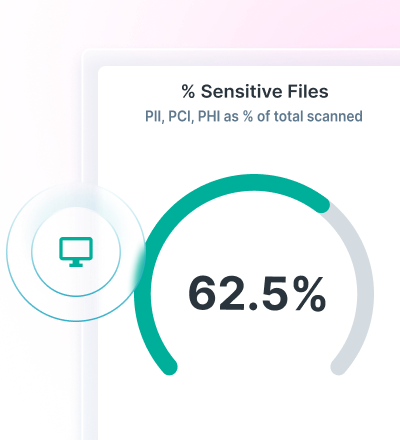
扩展并保护办公室、分支机构和远程位置的网路访问。
广域网路 — 确保安全。 Forcepoint Secure SD-WAN 通过零信任安全控制保护网路免受高级威胁,同时在全球任何地方保持卓越连接。
为什么使用 Forcepoint Secure SD-WAN?
集中管理:从云端激活分支机构、办公室和远程位置。 配置策略一次,然后使用安全管理控制台 (SMC) 进行零接触部署。
提高应用程序性能:减少延迟和抖动,并通过多链路连接、动态流量引导、应用程序运行状况监控和其他功能,确保关键应用程序优先获得带宽。
保护高级威胁:使用多层检测、入侵防御、DNS 池保留等检测和防止风险,同时保护通过 ZTNA 应用连接器对现场或远程应用程序的访问。
降低运营成本:实时混合和匹配本地 ISP 宽带与专有 MPLS 选项,从而节省网络成本并提高可靠性。
数据表
对比设备型号


Global Network
20+
Countries
45+
Cluster Nodes
Clustering In a Way No One Else Can Do
Christian Keller, CISO at Huber + Suhner, lists reliability, clustering, and ability to navigate global compliance requirements among the top benefits of Forcepoint NGFW.
了解 Forcepoint Secure SD-WAN 模型
云图像:
- 统一的 Forcepoint NGFW 软件
- 亚马逊 Web 服务 (AWS)
- Microsoft Azure 解决方案
- 确保出/入云的南北向通信和 SDN 东西向流量的安全
虚拟设备:
- 统一的 Forcepoint NGFW 软件
- 适用于 KVM、VMware ESXi 和 NSX
- 扩展至 64 个 CPU
- 自动执行网络微分段
- 可以与物理防火墙进行集群
客户为何选择 SD-WAN
客户为何选择 SD-WAN
"Our costs - both for the project and maintenance - are going down because we don't need resources locally, we have centralized everything. If we want new service on a train, we define the policy then give the hardware to the operator, who installs it."
VR Group
Frequently Asked Questions
What is managed SD-WAN?
A managed SD-WAN is a service where a provider handles the deployment, configuration, monitoring and optimisation of your WAN. Meanwhile, a cloud-managed SD-WAN adds centralised control via the cloud, making it easier to apply consistent policies, improve performance and maintain security across distributed networks without internal resource strain. Learn more about this product through our comprehensive managed SD-WAN solutions guide.
What are the benefits of SD-WAN?
Benefits of Forcepoint Secure SD-WAN include the following:
Centralized management
Improved application performance
Protection against advanced threats
Reduced operating costs
How much does SD-WAN cost?
SD-WAN costs are determined by factors, including the type of deployment, the size of the network, the number of locations to connect, the type and amount of data transiting the network and any existing infrastructure that may be leveraged when deploying an SD-WAN solution.
What is SD-WAN security?
SD-WAN security helps organizations enable effortless connection to cloud resources while protecting users, data and IT environments from attack.
What is an SD-WAN solution?
Ad SD-WAN solution applies software-defined networking principles to the wide area network.
What is an SD-WAN provider?
SD-WAN providers enable organizations to deploy SD-WAN technology.
What is an SD-WAN appliance?
SD-WAN appliances are physical or virtual controllers located on-premises or in the cloud that connect an organization’s users to applications, services and workloads.
How do SD-WAN appliances work?
SD-WAN appliances and products are designed to overcome the challenges of ensuring fast and secure connectivity for branch locations and hybrid workforces. The traditional wide area network uses a hub-and-spoke model that requires all traffic to flow through a central data center. For organizations with a highly distributed workforce, this model adds unacceptable levels of latency that negatively affect user experiences and productivity. Additionally, legacy WANs are built with costly Multiprotocol Label Switching (MPLS) connections that are time-consuming to manage and deploy, preventing organizations from scaling easily and cost-efficiently. SD-WAN overcomes these issues by creating a virtual overlay for the network that abstracts network connections and enables the use of additional, low-cost transport services that add redundancy and flexibility.
What is Multiprotocol Label Switching (MPLS)?
Multiprotocol Label Switching (MPLS) is data forwarding technology that increases the speed and controls the flow of network traffic.
What is SD-WAN vs MPLS?
SD-WAN is a networking technology that uses software to make wide area networks more intelligent and flexible by connecting sites directly to the internet over commodity broadband links. Configurations and access policies are centrally managed and easily applied across all sites, removing the need to manual administer each WAN device individually. MPLS is data forwarding technology for network traffic that directs data through a path via labels instead of requiring complex lookups in a routing table at every stop. Traditional networking technology, MPLS, has seen competition from SD-WAN solutions to meet today's high demands and expanding needs for networked business-critical systems.
What's the difference between an SD-WAN appliance, device and software?
An SD-WAN device or SD-WAN appliance refers to the physical hardware installed at network locations. Meanwhile, SD-WAN software runs on these or virtual platforms, managing routing, prioritisation and security functions. The terms are often used interchangeably, but "software" focuses on the functionality, while "appliance" and "device" refer to the hardware form factor.
How does Secure SD-WAN support high availability and reduce downtime?
Forcepoint Secure SD-WAN uses advanced clustering for high availability, ensuring continuous uptime even during maintenance or unexpected failures. Traffic is dynamically rerouted using Multi-Link technology, with automatic failover across connections. This setup eliminates single points of failure and protects application performance across sites. It also supports remote branches and cloud edges with always-on security, making it ideal for public and critical infrastructure requiring uninterrupted operations.
What kind of visibility and control does Forcepoint offer across branch and cloud environments?
Forcepoint delivers centralised policy enforcement and real-time monitoring through the Secure SD-WAN Manager Console (SMC). Admins can manage thousands of SD-WAN nodes from one dashboard, with granular visibility into link health, application traffic and latency. The executive dashboard view highlights how business-critical applications are performing across locations. Such a unified platform enables faster threat detection, proactive issue resolution and consistent enforcement of security policies across on-premise, branch and multi-cloud environments.
How does Forcepoint's managed SD‑WAN help comply with Australian data sovereignty laws?
Forcepoint Secure SD‑WAN enables organisations to enforce data residency by ensuring traffic routing and inspection occur within Australian borders, supporting compliance with the Privacy Act 1988 (APPs), Notifiable Data Breach scheme and My Health Records Act. As a leading SD‑WAN provider in Australia, Forcepoint helps maintain accountability and control under national frameworks like the ACSC and Critical Infrastructure Act while securing cross‑border connectivity.
Why choose Forcepoint as your SD‑WAN provider in Australia for critical infrastructure needs?
Forcepoint is a reputable vendor of managed SD‑WAN in Australia, offering robust support for the Security of Critical Infrastructure Act and Australian Cyber Security Centre standards. Our cloud‑managed SD‑WAN platform integrates local encryption and centralised policy enforcement, ensuring secure link redundancy, simplified auditing and compliance. Ideal for industries like healthcare, finance and government, it balances operational agility and regional regulatory demands.



















